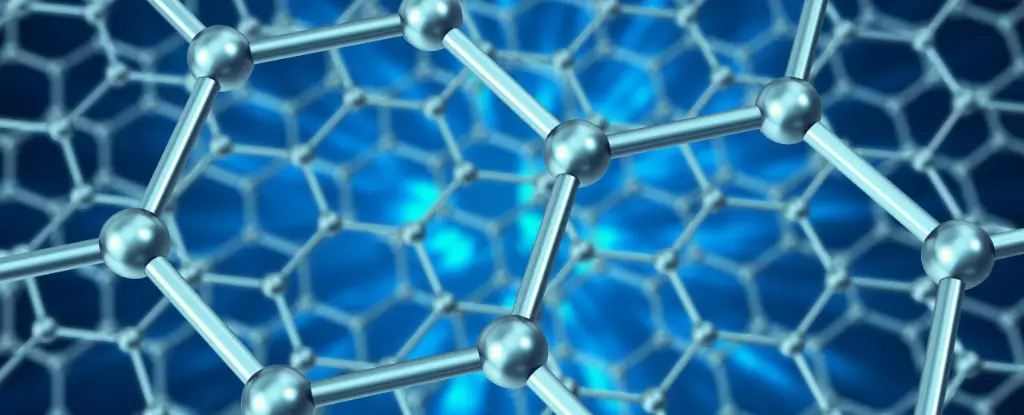In recent years, graphene has emerged as one of the most fascinating materials in physics and engineering, garnering attention for its extraordinary properties. Formed from a single layer of carbon atoms arranged in a honeycomb lattice, graphene possesses remarkable electrical, thermal, and mechanical properties that distinguish it from conventional materials. One of its standout features is its ability to allow electrons to move freely across its structure, akin to a conductor like copper, but with far greater efficiency. Researchers have been captivated by its potential applications, from next-generation electronics to quantum computing.
A groundbreaking study conducted by an international collaboration of researchers—spanning institutions like the University of British Columbia, the University of Washington, Johns Hopkins University, and the National Institute for Materials Science in Japan—has uncovered a novel state of matter within the realm of twisted graphene. This research delves deep into the behavior of electrons confined in this unique crystalline setup, revealing a range of phenomena not previously observed. By stacking sheets of graphene at precise angles, the scientists manipulated the electron dynamics in a way that they refer to as the moiré effect. This technique introduces complex interference patterns that fundamentally change how electrons behave.
The moiré patterns are reminiscent of those seen in daily life, such as lines and circles in grates and screens. However, in graphene, these patterns lead to significant changes in electron properties, essentially altering their “topological landscape.” The ramifications of such changes are profound, as they can lead to unexpected shifts in electron velocity and even induce twisting motions as they traverse the edges of the material. The linear recurrent behaviors observed here generate a new type of electron crystal, which, counterintuitively, can still conduct electricity at its boundaries even when the electrons have unified into an ordered array, a state reminiscent of a Wigner crystal.
The Quantum Hall Effect and Its Implications
The researchers zeroed in on the phenomenon known as the quantum Hall effect—a hallmark of topological electron states where resistance quantization occurs. In previous studies, this effect has been observed in two-dimensional electron gases, yet the emergence of it within twisted graphene presents a pioneering frontier. The study emphasizes that in traditional Wigner crystals, electrons become fixed in position and lose the ability to conduct electricity, yet the new findings suggest a simultaneous existence of order and conductivity. This property represents a paradigm shift in the development of advanced materials for electronic and quantum applications.
Contorted configurations of graphene can be likened to various geometric structures familiar in topology, such as the Mӧbius strip. The research indicates that these complex arrangements might unveil a multi-faceted lineup of electron quasiparticles, each exhibiting astounding physical behaviors. The mapping of this unconventional electron behavior is not merely a theoretical exercise; it lays the groundwork for practical applications in quantum computing. The exploration of new topological states presents an opportunity to create more resilient qubits—fundamental units of quantum information—potentially surpassing the traditional implementations reliant on isolated particles.
The implications of discovering new states within twisted graphene extend beyond quantum resistance and computing. This research could spark innovative approaches to developing room-temperature superconductors, fundamentally altering our understanding of electrical conduction in low-temperature environments. These advancements may facilitate more efficient and powerful electronic devices, paving the way for an era of low-energy consumption technologies capable of operating under ambient conditions.
The innovative work conducted by this consortium of scientists unearths thrilling new possibilities for harnessing the peculiar behavior of electrons in twisted graphene. As we push the boundaries of material science and quantum physics, we find ourselves increasingly confronted with the intriguing complexities of the universe. Continued exploration of these unique states will undoubtedly yield transformative technologies, fundamentally shifting our existing paradigms in both theoretical and applied physics arenas. Graphene may prove to be just the beginning of our journey into the intricate world of quantum materials and their potential ramifications.


Leave a Reply